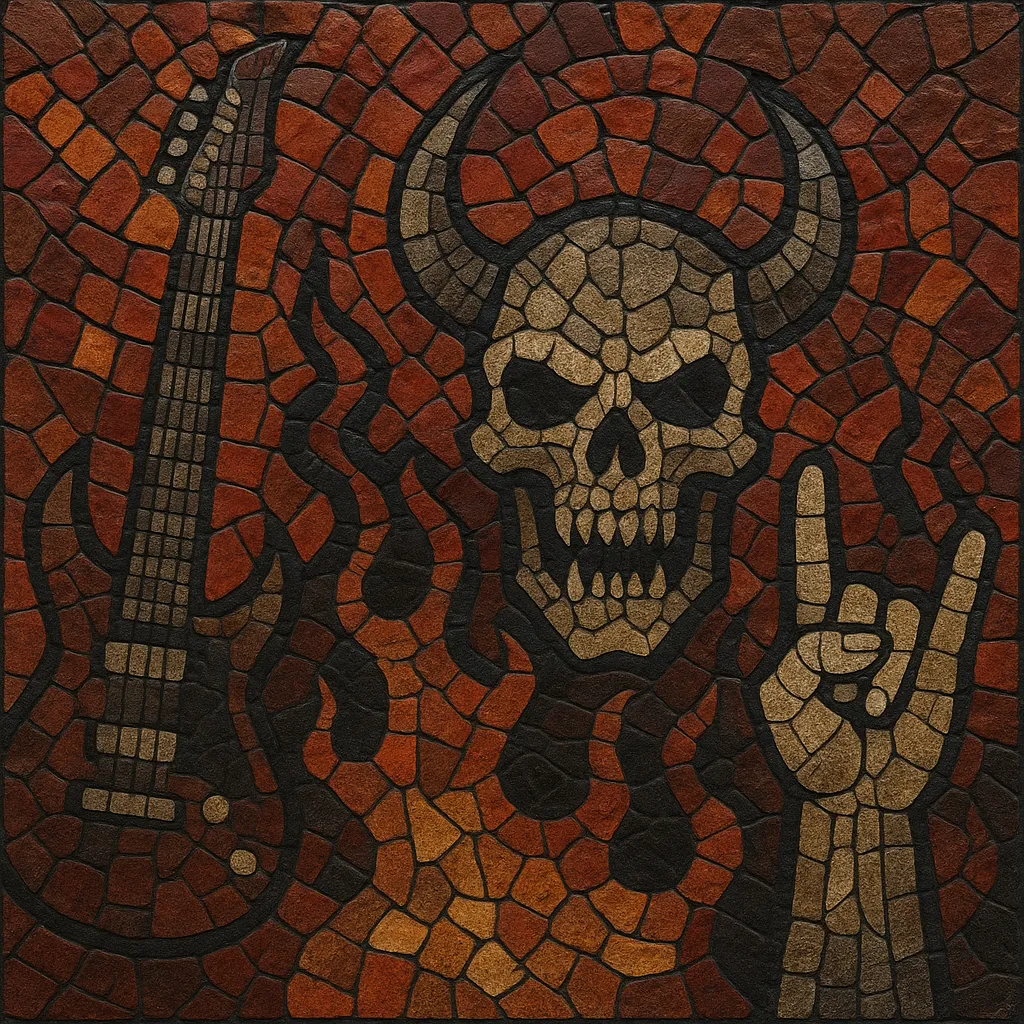Metal (often used to mean heavy metal in its broad, umbrella sense) is a loud, guitar-driven style of rock defined by high-gain distortion, emphatic and often martial rhythms, and a dense, powerful low end.
It foregrounds riff-based songwriting, dramatic dynamics, virtuosic guitar solos, and commanding vocals that range from melodic wails to aggressive snarls and growls.
Harmonically, metal favors minor modes, modal color (Aeolian, Phrygian), chromaticism, and tritone-inflected tension, while thematically it explores power, mythology, the occult, social critique, fantasy, and existential subjects.
While adjacent to hard rock, metal typically pushes amplification, distortion, precision, and thematic intensity further, forming a foundation for many specialized subgenres.
Metal emerged in the late 1960s and crystallized in the early 1970s in the United Kingdom, where bands fused the volume and riff-focus of hard rock with darker harmonies and heavier distortion. Proto-metal touchstones included Deep Purple’s classically tinged heaviness and Black Sabbath’s ominous riffs and tritone-laced progressions. These groups, alongside counterparts in the broader rock scene, codified traits like powerchords, extended guitar solos, and pounding, emphatic drum grooves.
The New Wave of British Heavy Metal (NWOBHM) streamlined and accelerated the style. Bands such as Judas Priest and Iron Maiden sharpened twin-guitar harmonies, galloping rhythms, and high-register vocals, pushing metal toward speed, precision, and a more technically disciplined sound. This period established metal’s global audience and set a template for stagecraft, iconography, and fan culture.
By the mid-1980s, regional scenes birthed faster and harsher offshoots. Thrash metal (e.g., Metallica, Slayer, Megadeth, Anthrax) emphasized breakneck tempos, palm-muted downpicking, and socio-political themes. Other branches explored theatricality and melody (glam metal), neoclassical virtuosity, and doom-laden tempos (doom metal). The genre’s sonic vocabulary broadened while preserving its core: riff-centric intensity and technical guitar work.
Metal splintered further into extreme forms (death metal, black metal, grindcore) characterized by blast beats, growled or shrieked vocals, and dense, often dissonant harmony. Parallel currents merged metal with other traditions: groove metal leaned on syncopated, mid-tempo riffs; industrial metal integrated mechanized textures; and alternative/nu metal incorporated hip hop rhythms, down-tuned guitars, and unconventional song structures.
Metal became decisively global, with scenes across Europe, the Americas, Asia, and Africa. Subgenres like symphonic, folk, and progressive metal cross-pollinated with classical, traditional, and avant-garde practices, while metalcore and post-metal broadened timbral palettes and emotional range. Despite constant mutation, the genre’s identity—amplified weight, riff discipline, and dramatic expressivity—remains intact.


